In 2023, Governor Maura Healey made history with Executive Order No. 618, which called for Massachusetts to set nation-leading biodiversity conservation goals, including for coastal and marine environments, for 2030, 2040, and 2050. To meet this charge, the Massachusetts Department of Fish & Game, alongside many partners, developed this ambitious 25-year plan to rebuild biodiversity and invest in nature to sustain our health and well-being, food security, economy, and way of life.
Biodiversity in Massachusetts
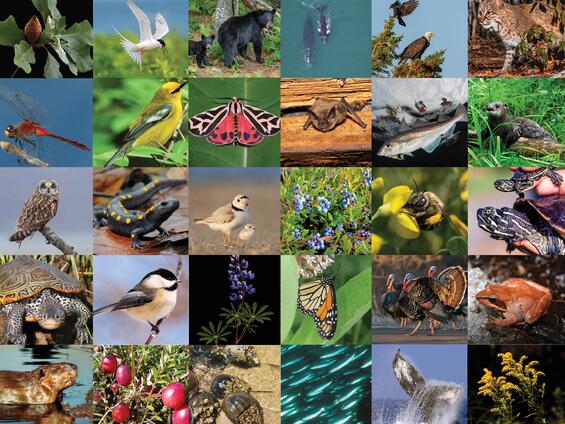
Massachusetts is home to an extraordinary abundance and variety of life. This is biodiversity—all the species, habitats, and complex interactions that make up the astonishing web of life. It isn’t just found in distant, wild places—it's all around us, even right in our backyards.
Biodiversity is the foundation for life—it anchors our history, heritage, and culture, supports our health and well-being, food security and economy, and enriches our lives. It is also key climate solution—nature protects our communities from extreme weather, drought, floods, and heat.
Despite its critical value, biodiversity is in crisis, both globally and right here in Massachusetts. Over 450 species are listed by the Massachusetts Endangered Species Act (MESA), and hundreds more are at risk. It’s not only rare and endangered species, common and familiar species we know and love are in danger, like the monarch butterfly.
Biodiversity Conservation Goals
There is hope and we can make a difference—Massachusetts will lead the way. From the global to the regional to the local: action at all scales will be necessary. This ambitious plan charts a path forward, with investment and collaboration, to rebuild biodiversity in Massachusetts.
This plan sets four key goals—Protect, Restore, Sustain, and Connect—each with specific strategies for action for 2030, 2040, and 2050. The plan also includes core commitments, governance, and innovative funding models to drive progress.
“We all have a role to play—this will take all of us, together. Through the Massachusetts Biodiversity Partnership, the Healey-Driscoll Administration will bring a broad coalition of partners, municipalities, and Tribes together to champion local action and position Massachusetts as a national and global leader on tackling the biodiversity crisis. Now, more than ever, future generations depend on our leadership so we can ensure that the Commonwealth remains a shining beacon of hope in uncertain times.”
Goal #1: Protect
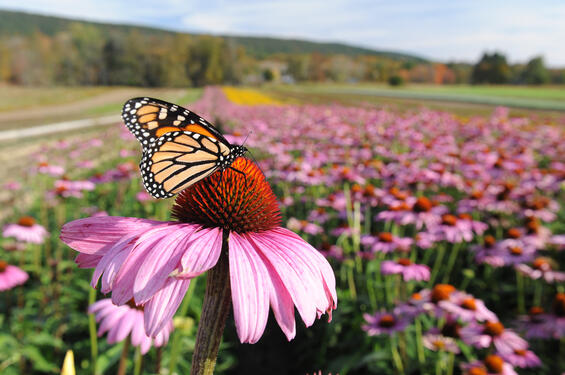
Massachusetts is losing nature at an alarming rate—habitat loss and degradation are the biggest threats to biodiversity.
We will strategically protect the most important habitats for wildlife and reduce pollution.
- Double the pace of land protection to achieve 30% by 2030 and 40% by 2050
- Strategically protect 425,000+ acres of the most important habitats by 2050
- Protect key wildlife migration corridors and build wildlife-friendly road crossings
- Support consideration of Cashes Ledge National Marine Sanctuary
- Protect people and wildlife from pesticides, pollution, and plastics
- Support community-led efforts to protect local biodiversity
Goal #2: Restore
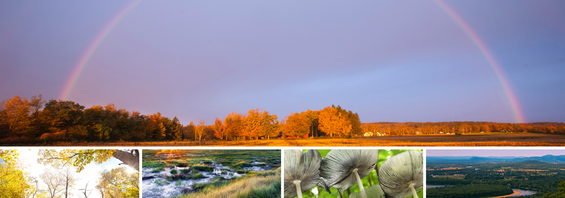
Many habitats that species and people rely on are degraded — care and stewardship will deliver safer, healthier communities.
- Restore 75% of the most important habitats to good health by 2050
- Remove 10% of 3,000 dams and restore fish passage in every coastal watershed
- Upgrade over 2,500 culverts for biodiversity and climate resilience
- Restore essential marine habitats and salt marshes
- Grow native plants for pollinators and remove invasive species
- Support community-led efforts to restore local biodiversity
Goal #3: Sustain
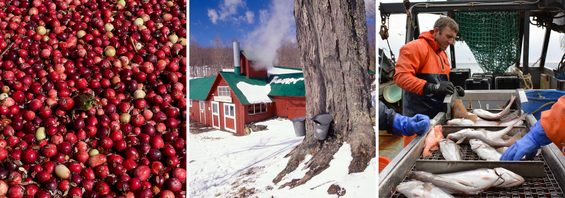
Biodiversity supports the local food systems we all rely on — we can grow access to healthy, sustainable foods for all.
- Support biodiversity on farms, ensure no net loss of farmland, expand community gardens in urban areas
- Boost our blue economy with no net loss of shellfish beds, restoring habitats and water quality, and investing in working waterfronts
- Increase food security with wild foods, access to hunting and fishing, and foraging
- Value ecosystem services of biodiversity through innovative and dedicated funding mechanisms
Goal #4: Connect
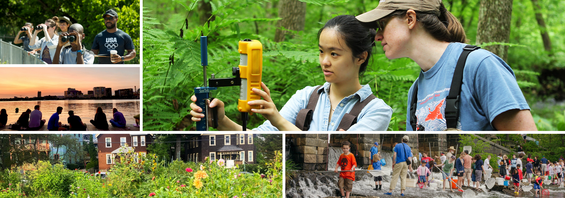
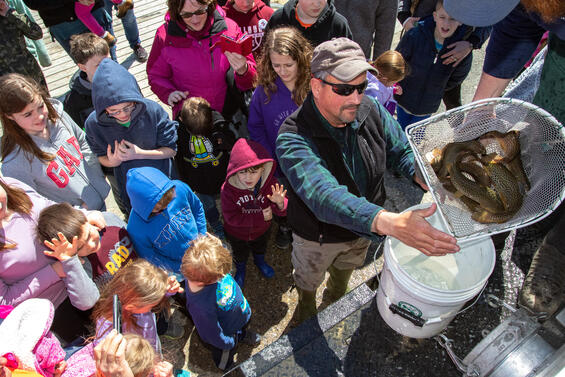
We can ensure that all people have an opportunity to feel a sense of appreciation, belonging, and connection to nature.
- Nature in the Neighborhoods: Launch the local biodiversity grants program to support community-led efforts and develop a municipal biodiversity toolkit for city and town leaders
- Nature in the Schools: Develop a biodiversity-focused curriculum for K-12, after-school, and summer programs
- Nature for All: Launch a public education campaign and invest in access to nature for all
- Nature at Work: Invest in workforce development to launch the next generation of conservation and restoration leaders
Biodiversity Implementation Matrix
The Biodiversity Goals Matrix contains all the goals, strategies, implementation timelines, lead agencies, and potential collaborators who will carry out this ambitious plan. The matrix is a living document that will track our progress to 2030, 2040, and 2050.
Supporting Documents
Public Process
The Department of Fish & Game hosted two virtual public listening sessions on July 17, 2024 from 12-2 PM and July 23, 2024, from 6-8 PM. Download the presentation slides and watch the recording in: English | Español | Português | 中文 | Kreyòl Ayisyen | Tiếng Việt | ASL Interpretation
Written comments were accepted July 15, 2024–August 30, 2024. Thank you to all who shared your thoughts! Read the comments here.
Contact
Online
Fax
Address
| Date published: | August 21, 2025 |
|---|